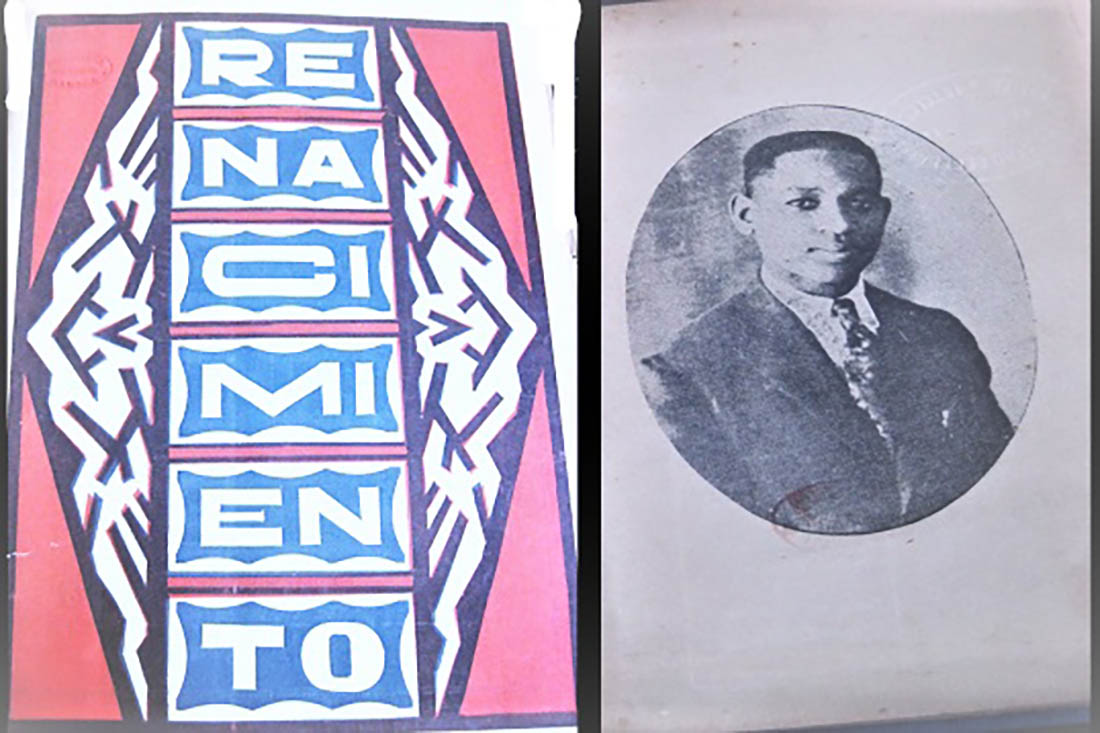The Editorial Board of the Renacimiento magazine was made up of young people with high-flying cultural and patriotic concerns. They were children of veterans of the wars of independence, social activists, members of multiple associations: cultural, professional, ethnic and political, generally Masons by family heritage. Serapio Páez Zamora, journalist, essayist, fighter for civil rights, son of veteran of the Independence War José del Pilar Páez Silva, founded the magazine Renacimiento in March 1933. The frequency was monthly, illustrated and dealt with social issues. Faithful exponent of cultural contribution, the virtues and the noble examples that his ethnic conglomerate offered to progress, he wrote down the original Editorial note.
The director and social leader, Serapio Páez Zamora, in addition to being a journalist and historian, was an anti-Machadist fighter who, together with his brother Cipriano, were expelled from the country by the government forces; Serapio wrote in 1934 the novel Virgen del Solar. The deputy director was Carmelo Álvarez de la Rosa, violinist and music teacher, from a distinguished family since the colonial era for his musical talent and patriotic decorum. The young man, Tomás Vélez Betancourt, was the one who managed all matters related to the magazine, who also followed in his father’s footsteps, he was a teacher and director of one of the prestigious Vélez del Camagüey Academies, of First and Second Teaching. The editorial secretary was the writer Federico Montané Minué. As a cartoonist and caricaturist, the painter graduated from the San Alejandro school of plastic arts, José del Pilar Cordoví, among other young people who also formed the editorial team.
Renacimiento themes
The arts issues reconfigured this profile at the national level. Placing in the artistic geography of the nation the particularities of the localities, although Camagüey was weighted, there were authors from Matanzas, Havana, Santiago. The magazine systematized the scientific issues, led by female hands, doctors, midwives, teachers, political activists, in short, the magazine from the authors, developed a restorative justice action with women of non-hegemonic ethnic and economic status.
The philosophical-reflexive contents were permanent, as well as the historical ones of the locality and the country. Personalities, families, ordinary people who contributed to the desires expressed in the first editorial note, the virtues and good examples that feed sustainable values today were distinguished.
Authors
In the literary space of the story, they incorporated some of the authorship of outstanding national writers such as Cristina Ayala; although locals such as Fabio Luaces, teacher and director of the Public School no.8 in poetry and theater. The recognition of the professionals Fernando Bastián, José Varona Hernández, the De la Rosa family, the Páez family, among others, allow us to enjoy an image together with the social chronicles carried by Alfonso Sedrés, of the pulsating daily life of Camagüey in the form of snapshots in that period of time.
The professional directory, in the final pages, offered guidance on many professions, trades, businesses, hours and spaces. The new graduates also had an opportunity from the Renacimiento magazine to make themselves known as public servants.
Present-day
The Renacimiento magazine, founded by Serapio Páez Zamora, Chelín, as his friends knew him, is a contribution to the concert of the historical heritage of the town, worthy of its dissemination, of its recognition as part of the historical memory. It allows broadening the discernment on those who, from the decorum, the effort, the values acquired from their parents, grandparents, contributed to the social development of the locality and the nation.
Bibliography
Revista Renacimiento 1933-1934. Redacción y administración Raúl Lamar. No.1
Translated by: Aileen Álvarez García






